Every web application development consists of two major components: frontend and backend tasks, both of which are needed for operating any website out there. The front end is the outer style of a website and interacts with users. While the backend part mostly operates in the background and communicates with databases to fetch the requested data.
Although developers use a huge variety of languages and tools to build an effective website, the technical stack typically consists of HTML, CSS, Bootstrap, and JavaScript. Back end developers leverage various frameworks and various programming languages such as PHP, Ruby, Python, C#, and Java to build a web application that provides all necessary functionality to users.
This article will guide you on the basics of back end web development work, back end programming languages, and where you can hire a back end developer yourself.
Core Information about back end developers
What is backend development?
Most of the people who are somehow connected with the IT digital world can sometimes twist and phrase the job description of a backend development process in the wrong manner. For that reason, let’s be clear right from the start about what backend development is. Backend development refers to any processes that occur behind the web application architecture. It is completely transparent to users and is sometimes referred to as server-side programming.
The entire development part of it is based on several main components: a server, an application, a middleware, and a database. To construct a web application development process, all of the developers are using a set of programming languages and a dedicated framework. That way they can build a quality web app. We’ll cover all of these components in detail later on.
Who is a back end developer?
A backend developer is typically referred to as a programmer who uses any programming language to construct useful and functional business logic for online web applications. The majority of the tool components that a back end developer uses are evaluated at the start of the website development. As the business requirements and the business type are directly impacting upon the website appliance. Additionally, the back end developer organizes the correct connection between the frontend and database parts accordingly.
Back end developer duties
Provide the information to users
Regardless of the web application design, consumers constantly request data while using an app. This always stays true regardless of whether the application has “rich data” in it, or an application displays public transit maps, or whether it’s another web app children's game.
Combine and transform the information
Any kind of data or information that is highly needed for an app to function may come from a variety of different sources, which are referred to as databases. At this stage, the job of a back end developer is to locate the particular information the user is looking for inside the various databases and only then combine it to produce the inquired results.
Let’s say that you want to download an online desktop map app and want to find correct directions towards the cafe that you like or your job address. In that case, the app would need access to not only the city bus database but also to databases for other modes of public transportation, like taxis, metro, bicycles, etc.
That sounds difficult, doesn't it? It can be difficult, but with a polished backend architecture, a web app is capable of locating the exact information required by the user. Plus, the backend technologies skeleton is constantly optimizable, and developers can often add new data or information to answer user requests.
Display the information
Finally, after the back-end has collected and combined all of the requested information, it must send the data to the user. However, how many users are aware of how to read the information produced by the back-end in pure code? Probably just a few. As a result, the back-end needs “translators" to convert the pure code to a human language. To do that, the APIs and front-end are introduced in the game.
Back End Developer Professional Levels
Now, let’s look at the expert level that any back end developer can attain during his active career. The skill level of back end developers is classified into three degrees that determine the possible technical capabilities: junior, middle, and senior.
Junior back end developer
A junior back end developer usually has 0-2 years of experience and works as an assistant. However, the majority of junior back end developers possess the necessary expertise to identify and resolve the most common challenges and tasks encountered when developing servers or databases. That way, they could be the best choice for your business if you want to give a low salary while still completing a relatively simple project. Even though these kinds of beginner back end developers have a desire to learn, they do work slower and may lack the necessary skills.
Middle back end developer
The seniority level in web application development is earned by gaining years of experience. This is why hiring a middle back end developer is a better bet for your company. A skilled programmer will analyze the business's objectives and budget and will make recommendations for resolving any issues that arise almost immediately. Additionally, the middle back end developers have acquired valuable experience in developing and maintaining various website servers, software, and databases. They have a more comprehensive view of the creation process as a whole.
Senior back-end developer
If you need a senior web developer, only a senior back end developer would possess the necessary skills and expertise, presumably, he should have more than five years of relevant experience. This individual should not only be a skilled and efficient web back end developer but also possess the skills required to lead the development team for your website. Senior developers do not need extensive supervision and are capable of maintaining development workflows on their own. That is the reason why so many early-stage companies have a strong demand for senior software developers.
Related Posts: Mobile Application Development Guide,Web Application Guide, Web Design Guide
Difference between a backend development vs frontend development
The frontend technologies are the other side of a coin that has backend technologies in it. The critical distinction is that while back end developers create the functionality of a website, front-end programmers construct the interface for users, which determines how the website will be visually represented.
Neither one of the developers operates in isolation. Instead, the back end developer is required to make the front end work, and the front end is required to allow users to access and communicate with the website. Meaning that both of these jobs are directly tied with each other and one cannot operate independently.
Backend developers usually receive more than frontend developers, since backend languages are more technical. Backend developers earn an average of $101,619 per year, while frontend developers earn $76,929 per year. Additionally, some full-stack developers are proficient in both back end technologies and front-end technologies, as they are like jack-of-all-trades workers.
Core backend developer skills
This section of our backend development guide will give you a deep insight into the critical aspects of back end technologies and how they are interlinked with each website component out there.
Typically, every back end developer synthesizes technology and coding that improves the website. Thus, the functionality of a web app is determined by its programming, however, the same backbone is hidden from users, and they are unable to communicate with it.
Back-end developers are essential to the growth of websites. They are responsible for ensuring that the data or services required by the front-end system or applications are successfully provided. Below, we’ll discuss each relevant component in detail.
Servers
In most cases, the backend technologies that initiate the website life are mainly placed in the cloud or the server, which is the network's lifeblood. These are very powerful workstations that provide a dedicated network with the shared resources they need to operate a website, such as file storage, web protection, encryption, databases, email, and other essential services. Once you've mastered the fundamentals of a website server, one should expand their knowledge by studying virtualization, (multiple servers are provisioned to run multiple applications), and containerization, (servers partitioning their operating systems to run compartmentalized applications).
Middleware
Middleware is a term relevant to any server-side software that connects an application's frontend to the backend. One may say that middleware is like a link for your website: it transports data between your web application and your server/database, such as requests and responses.
Middleware enables client-server networking by acting as a middle layer between the application and the network's various components: the server, the database, and the operating system. Middleware may be multi-layered, arranged according to the presentation or business layers of a website. This is also an area where Web APIs can contribute to the stack by acting as a link between the business and presentation layers.
Additionally, middleware enables cloud and on-premise applications to communicate, as well as provide various services, such as data integration and error handling. An effective middleware can improve IT productivity by powering user interaction, business process management, content management, and authentication.
Programming Languages
This part is divided into several sections, as the topic of the programming language is a very broad and deep topic. For that reason, we’ll cover all the basic knowledge that one has to understand, before getting an opportunity to choose the right programming language.
Key criteria for choosing the right programming language
Scalability
The scalability criteria refer to the configuration’s "flexibility" in terms of incorporating new feature implementations. This is critical as you need to let your web application development process grow further and further to attract more potential customers.
Not only are these changes inside apps unavoidable, but they are also recommended. Users evolve, as do their needs and business models. As a result, your app and its architecture must be built in a way that you and your team can overcome those obstacles.
Security
Due to the constant connection with various data, it is significant to build safe practices for your website with a specific set of back end technologies. This is especially critical when the data is constantly being used between the user and the website, which can be a financial, personal, or medical one.
To assist a business owner in a safe back end web development, try to follow these recommendations: hire only experienced web app developers, use encrypted connections (such as HTTPS), and encrypt the databases that are directly tied with your website.
Robustness
The robustness factor means the "power" of back end technologies or rather the capacity to continue operating in the face of unforeseen events. Consider the case of a web eCommerce app of a startup whose platform is still unprepared for a huge flood of users that are dynamically logging in and making transactions during the Christmas season.
What will happen in that case? Your web application will go down immediately. And then your users will become enraged and impatient. They will easily switch to your competitor's app to find offers.
So to avoid this scenario, you must bear in mind that your web app must be designed in such a way that it can adapt to unforeseen circumstances, such as a large number of users arriving simultaneously during any season sale.
Types of Backend Development Languages
The back end technologies are mostly divided into two main categories: object-oriented (OOP) or functional.
The strategy of the first one is concerned with the code statements that should be implemented in a specific order while using object-oriented programming. The most common OOP languages are Java,.NET and Python.
Functional programming is more of an "action-oriented" approach. Functional programming makes use of a declarative vocabulary, which allows the execution of statements in any order. It is often used in data science. This approach is commonly used in such programming languages as SQL, F#, and R.
Core Back End Programming Languages
Java
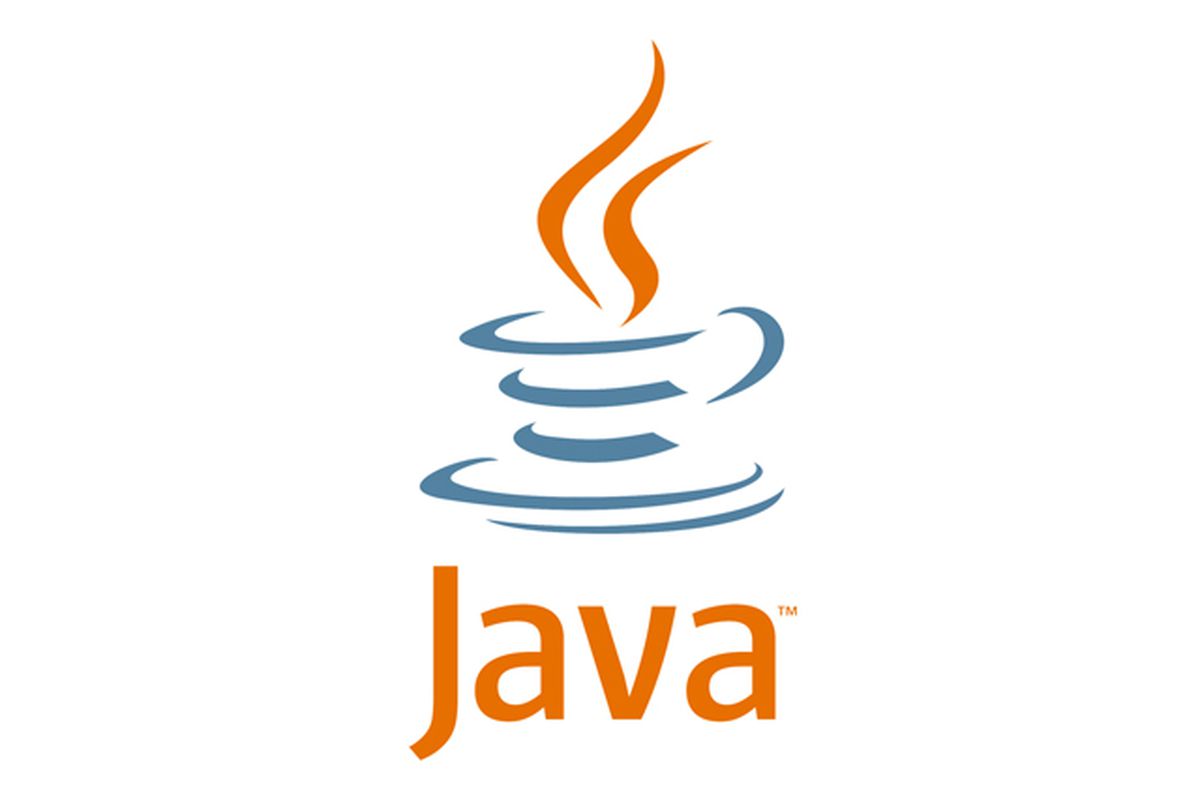
Java is the most common programming language on the planet and without a doubt, this is not an overestimation. Java is not only highly flexible (used in anything from smartphones to smart cards), but it has also been used by developers for more than two decades.
The Java Virtual Machine (JVM) is what gives this language its versatility. Compiling a program in several development languages generates code that may behave differently depending on the machine on which it is run. Due to the JVM, this is not a problem for Java. The Java Virtual Machine functions as a middle layer that enables code to be executed on any platform, regardless of where it was compiled.
Though Java is extremely common among developers of desktop and business applications, it is not that beginner-friendly if compared to Python. The reason is quite simple: it takes more time for a beginner to grasp all of the coding implementations and functions at once. Plus it’s not that friendly and less rewarding for newcomers.
Having said that, Java has a huge history of successful project implementations, while the community is extensively large. As a result, any concern you may have about the programming language will almost certainly be addressed and answered in any online portal discussion and online tutorials.
PHP
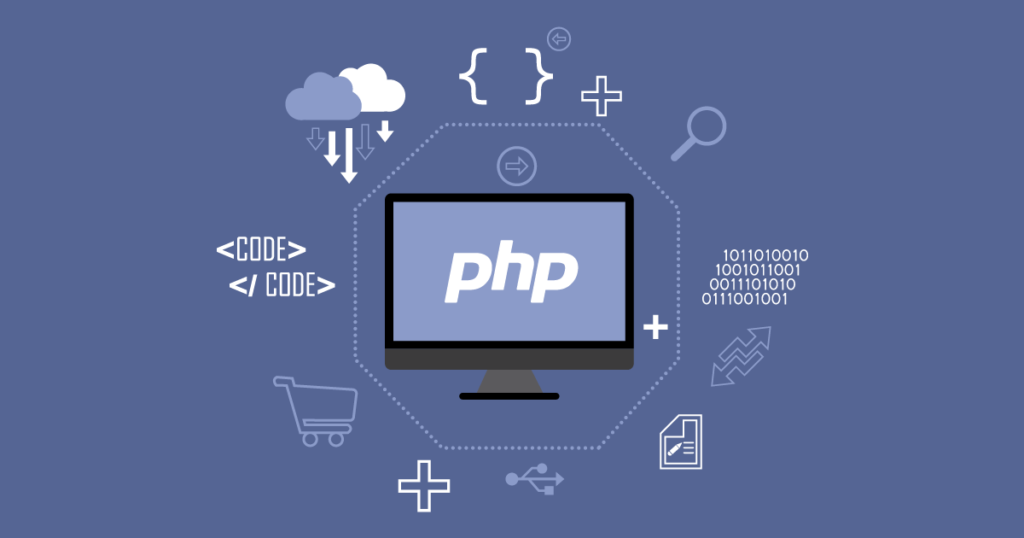
PHP is a dynamic programming language that enables a back end developer to use a variety of solutions and workarounds for a single issue in a web app. This means that the same line of code may have many interpretations depending on the context, which makes PHP programs difficult to scale and sometimes slow to run.
PHP is an excellent choice for web application development programming language. Here are some of the core reasons, why you may want to learn it:
- Error Forgiving: Meaning that you’re able to compile and run your code until you reach a problematic part, which you can solve before implementing a final solution into a web app.
- Community: There is a huge pool of different resources dedicated to the language, as well as the large community and tool support. The language undergoes constant updates, so it does ensure you’re learning from up-to-date guidelines.
- Easy to Set Up: The launching setup is relatively easy compared to any other language (like Ruby on Rails, for example). You can download MAMP (for macOS) or WAMP (for Windows) and you should be ready to go in 5 minutes.
Python
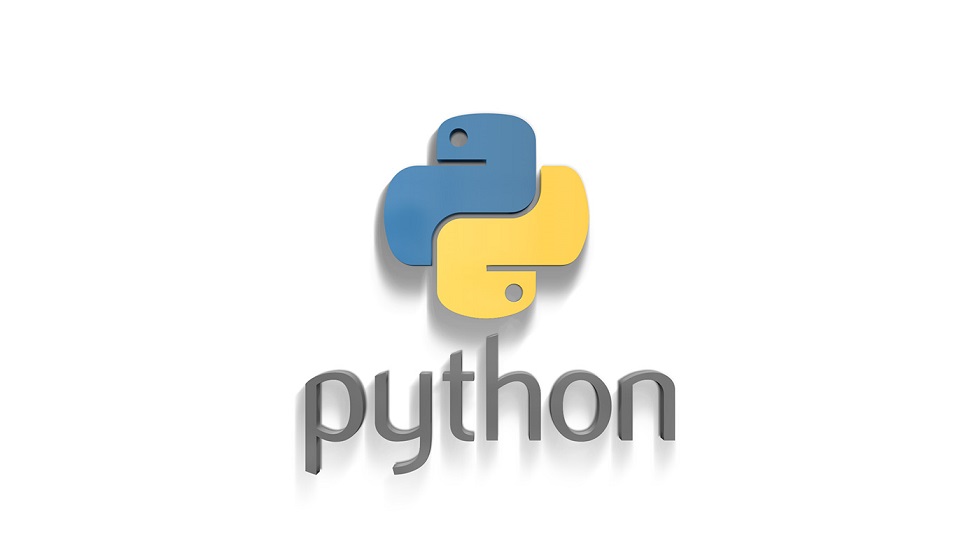
If you want to start your career as a back end developer, you can begin by shaping your initial skills with Python. Though Python has little to do with the snake that inspired its name, it is one of the most widely used programming languages today. Python was named as the world's "fastest-growing programming language" by Stack Overflow, surpassing Java and ranking second only to Rust.
The prestige of the language is well-deserved. It is equally good at handling basic and complex web projects and has been actively used across a range of different industries, from healthcare to travel. Python's syntax has been used to create strong web applications by big industry corporations such as Spotify, Instagram, Disqus, and Dropbox.
The success of Python? It supports a variety of programming styles and has excellent data visualization capabilities. Python enables developers to easily switch between procedural, functional, and object-oriented programming types. It supports large data libraries that simplify visualization and accelerate growth. Additionally, Python is a relatively simple programming language to understand and learn.
Python is one of the most basic and important skills that any back end developer must possess.
Supportive Back End Programming Languages
SQL
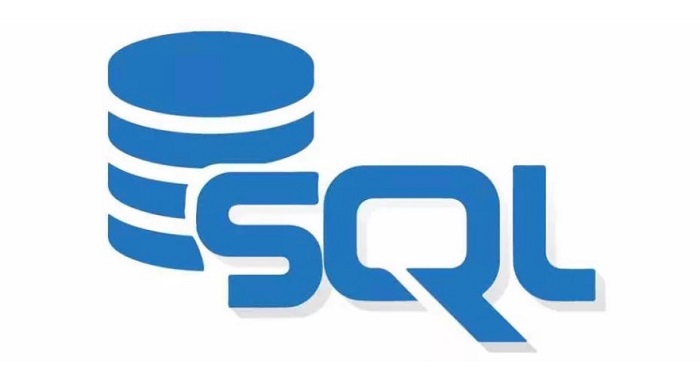
Even though the digital industry is going too fast with constant updates and programming languages that are constantly changing one another it doesn’t necessarily concern SQL, as it appears to be an exception to this law. In 1986, the American National Standards Institute, appointed SQL programming language as an industry-standard language for all back end developers who have been able to access and manipulate relational databases. SQL enables programmers to easily insert and remove documents, construct new tables and stored procedures in a database, and even assign permissions to certain tables and procedures. If you're ever going to have to deal with relational databases you're going to learn SQL.
If you're new to the language and want to practice, consider a MySQL platform where one can easily train and master his skills. MySQL is a free SQL database source code repository provided by Oracle. It is relatively simple to use since it can be mounted on both desktops and servers. At the same time, it runs on a variety of platforms, including Linux, Windows, and UNIX.
However, it doesn’t necessarily mean that SQL is the only database manipulation language. In 1998, Carl Strozz pioneered the idea of a NoSQL language. The idea of NoSQL language revolves around interacting with databases that do not use relational tables to store data. The choice between SQL and NoSQL is entirely given up to the developer, as both choices are effective.
Git

Git is both a modern and explicitly popular choice among back end developers when it comes to version control systems that can suit various project needs. It is constantly getting updates while being open-source. Each back developer who has a working copy of the code has easy access to the complete history of project modifications, which makes it simple to modify and restore the code. Git is one of the most dynamic, scalable, and stable tools available to back end developers.
Frameworks
Although all back end programming languages and frameworks have become an integral and core component of a web application development process, the quest for finding the right framework can be a difficult task sometimes. There are countless frameworks accessible in several languages.
More than that, every programmer feels a need to align the website’s architecture with the code's usability to ensure that it executes every available feature for every end-user. As a result, limiting oneself to a single framework would be a poor decision when attempting to produce a quality and modern website. Therefore, we've compiled a list of some of the popular back-end frameworks that most of the back end developers use.
Express.js

Express.JS is a free and open-source platform for web application development using Node.js – a back-end JavaScript framework. Express.JS is very advantageous for developing scalable applications that make use of a variety of HTTP utility methods. For those who are new to web application development and are gaining more back end developer skills, ExpressJS is the simplest platform that can be easily learned. The majority of developers choose ExpressJS because it enables them to build server-side web applications more quickly.
Features
- Server-side execution.
- Advanced routing mechanism.
- Easy debugging.
- A large number of plugins.
Laravel
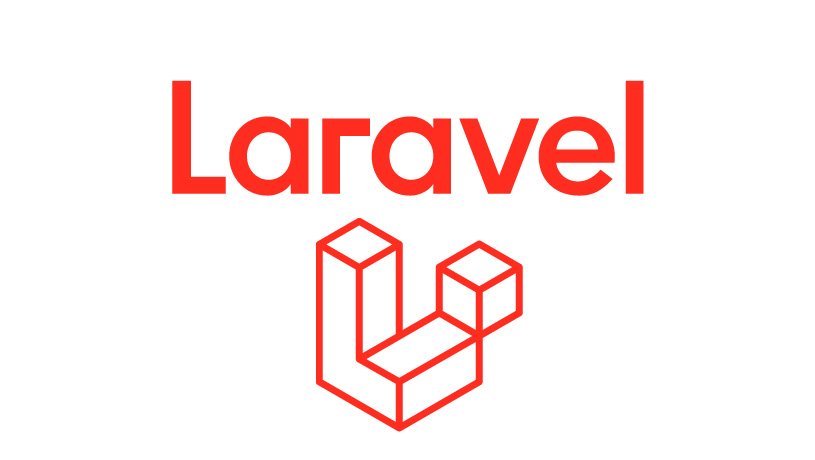
Lavarel is an open-source PHP framework praised for its elegant syntax and ecosystem, which includes Forge for server management and Nova for an administration panel. With a quick routing engine and comprehensive documentation, it enables developers to build robust websites and host the majority of web projects.
Features
- Lightweight templates.
- Widgets with JS and CSS.
- MVC.
- Hashed password modalities.
Django
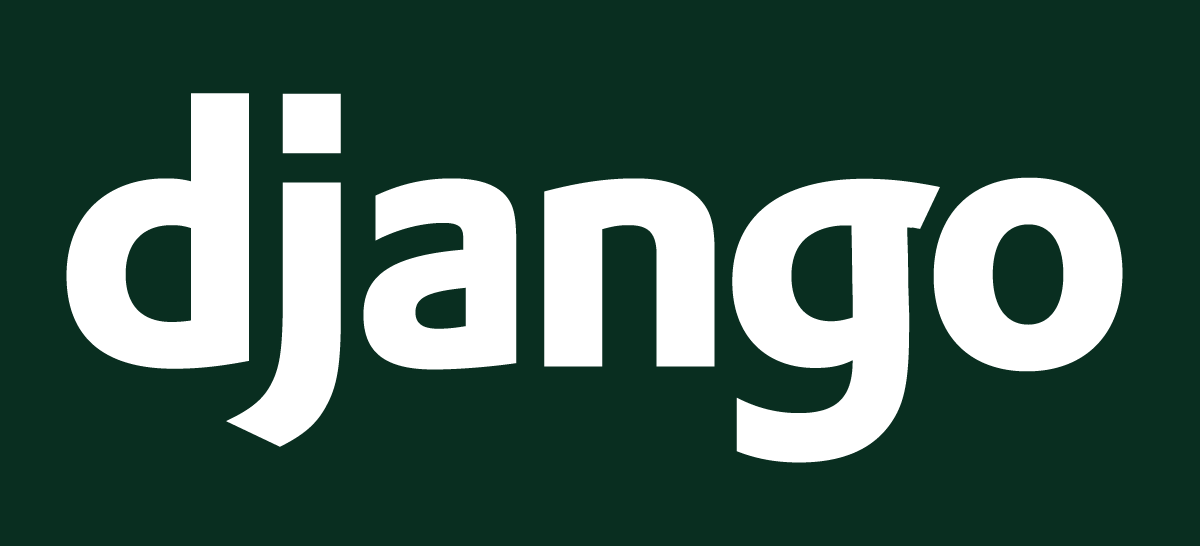
Django is one of the most common and open-source frameworks designed for back end web development. This architecture was developed by a group of highly professional developers who prioritized automating as much work as possible to accelerate the server-side development process. The most compelling feature of Django, according to developers, is its highly protected mechanism.
Features
- Scalable architecture
- “Simple to learn” framework.
- Prevents most common cyber attacks.
- Reliable.
Flask

Similar to Django, Flask is another Python-based framework that enables developers to largely utilize the advantages for developing small web projects by providing extensive documentation. Flask does provide developers with a huge extensive suite of software, libraries, and technologies. Additionally, Flask has a huge number of extensions contributed by the Flask community developers.
Features
- Lightweight
- Extensive documentation.
- No dependencies on external libraries.
- Optimal performance.
Databases
In the development context of a website, a database serves as the brain that allows dynamic actions for various websites. For example, whenever you submit a request from a website — whether it's to inquire about a product in an online eCommerce store or to simply browse all available doctors in the telemedicine web app, the database is responsible for authorizing the query, extracting the data, and returning it to the end-user.
Additionally, databases can be updated by the users themselves, as they will constantly interact with a website or program. For example, if the user is posting articles to a content management system (CMS), uploading photographs to a social network profile, or updating their customer information, they are changing the database records directly from their browsers.
Version Control Systems (VCS)
A version control system is a piece of software that many back end developers utilize to save the code implementation history. That way they can monitor project improvements and fix any occurred software bugs. Developers can collaborate easily on code and separate their tasks through different branches. The version control system provides several divisions that are used to preserve individuality by retaining code modifications within the designated code branch.
VCS simplifies the process of combining code updates, viewing history, and reverting the versions of the code. They provide many other benefits, that include streamlining the project creation process, ensuring proper code management, and maintaining a history of all modifications made to a piece of code.
All code modifications are saved in a designated repository, where all back end developers can quickly change them. Another incredible feature that any programmer may use to fix any encountered issues is to compare the new code to its older version. It minimizes any human errors.
Here are some of the popular choices of developers for VCSs:
- GitHub
- GitLab
- Beanstalk
- PerForce
- AWS CodeCommit
How much does it cost to hire a back end developer?

The United States of America and Europe are the top areas with the highest salaries for back-end developers. The average hourly rate for a back-end engineer in New York is around $55.94 (as of 2020). Similarly, the average hourly rate for web developers in the United Kingdom is $71. However, the situation is very different in Latin America, Eastern Europe, Asia, and Africa. In Ukraine, the average hourly wage for a back-end engineer is only $37. This is why many US businesses choose to establish or employ offshore development teams in Eastern Europe, Latin America, India, or other locations around the world, as their services will be cheaper.
In the United States, the average wage for a back end developer is $115K per year, however, the developer's experience affects this estimation. Similarly, a senior back-end developer earns an average of $145K in the United States. A middle back-end developer earns approximately $100,000 per year, while junior back-end developers earn approximately $72,000 per year.
Where can you find a back end developer?
To recruit the right back end web development specialist for your business, it is critical to identify your business objectives at first. By defining your expectations, objectives, and requirements, you will determine what kind of a development team you truly need to hire.
Freelance back end developers
Hiring a freelancer is the optimal option for businesses that have a limited budget on their hands. Due to the constant rivalry on freelance websites, you would typically be able to find a back-end developer for a reasonable price within a given timeframe. If you have just a backlog of tasks that have to be finished and you don't have any long-term development projects, then you may benefit from partnering with independent back end developers.
Otherwise, if you need assistance with a startup web application development project, you might also wish to consider hiring a freelancer. These are the most popular platform when it comes to recruiting freelancers:
- Upwork
- Toptal
- Freelancer
- Fiver
- Codementor
Local back end developers
If you're looking to hire a back end developer for long-term web application development for your company, then hiring a freelancer poses a great risk. This is the reason why so many businesses choose to employ a local back end developer. Paying a regular monthly wage attracts a motivated developer to the software development team. Thus, if you have impressive and complex development projects, hiring a local back end developer is a secure (but costly) attempt. These are the online resources that can help a business owner to find and hire one:
- Indeed
- CareerBuilder
- Glassdoor
- ZipRecruiter
Outsource back end developers
If you require a professional and yet budgetary option that includes a team of back end developers for your web app project, then you can employ an outsource agency. IT outsourcing agencies have proven to be an ideal option for businesses who cannot afford the high wages associated with the United States freelancers or local developers but need a top-notch development team.
The easiest way to find a trustworthy development partner is through a personal recommendation. This ensures that your partner or a business friend of yours shares the details of his cooperation with an outsourcing firm. That way you can safely trust them with the production of your product. However, if you are unfamiliar with outsourcing firms, then you can mitigate the risks by referring to platforms that can advise you which company to choose. YouTeam, Clutch, and GoodFirms are a few companies that verify each outsourcing partner, allowing the clients to recruit developers with complete confidence.
Conclusion
All in all, every software developer out there should understand how to build a user interface, the fundamentals of the web platform they are currently building, how to store and retrieve data from a database from inside the program, and how the web app infrastructure operates. At the same time, be careful when choosing the right back end developer yourself. Trust only those that can prove their expertise with their knowledge and portfolio. Otherwise, try to ask for any recommendations from your business partners or friends.
Hopefully, this guide will help you in your early journey whether you are a business founder or a back end developer yourself.